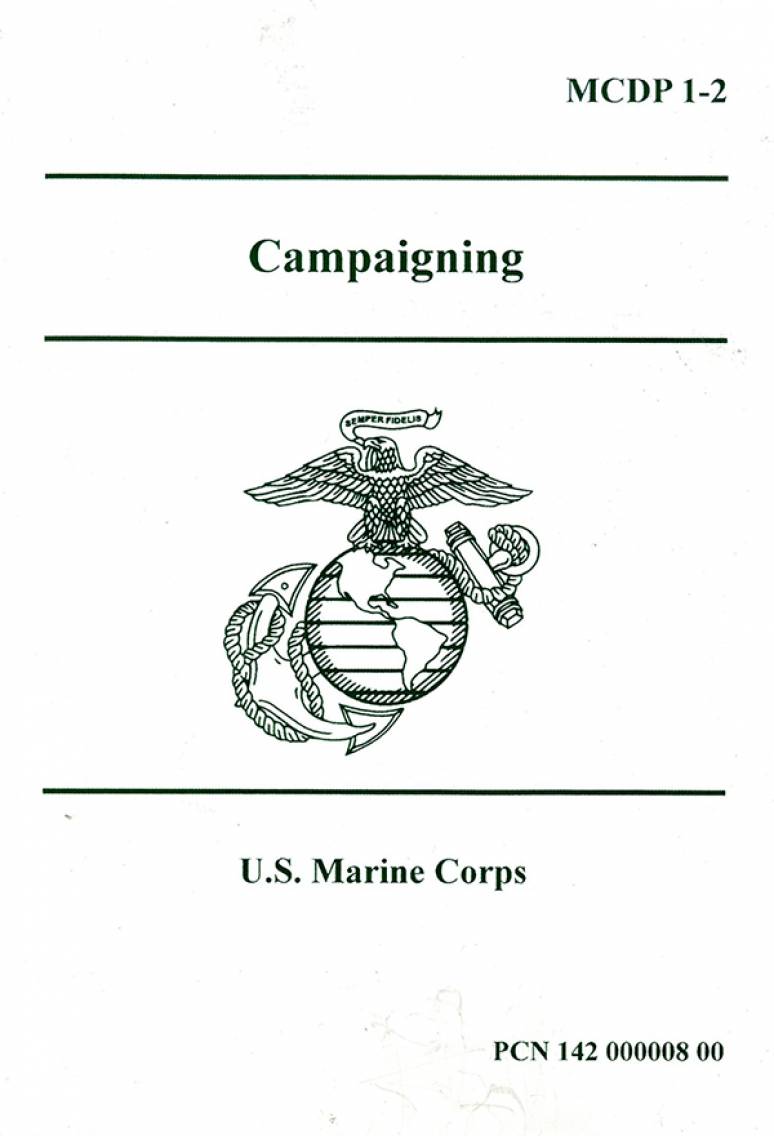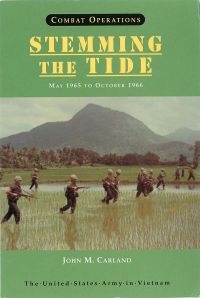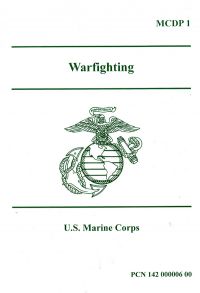
MCDP 1-2 supersedes Fleet Marine Force Manual (FMFM) 1-1, Campaigning, of 1990. MCDP 1-2 retains the spirit, scope, and basic concepts of its predecessor. MCDP 1-2 further develops and refines some of those concepts based on recent experiences, continued thinking about war, and the evolving nature of campaigning in the post-Cold War world. The new version of Campaigning has three significant additions: an expanded discussion of the linkage between strategic objectives and the campaign, a section on conflict termination, and a section titled “Synergy” that describes how key capabilities are harmonized in the conduct of a campaign to achieve the strategic objective.
Central to this publication is the idea that military action at any level must ultimately serve the demands of policy. Marine leaders at all levels must understand this point and must recognize that we pursue tactical success not for its own sake, but for the sake of larger political goals. Military strength is only one of several instruments of national power, all of which must be fully coordinated with one another in order to achieve our strategic and operational objectives. Marine leaders must be able to integrate military operations with the other instruments of national power.
This publication makes frequent use of historical examples. These examples are intended to illustrate teachings that have universal relevance and enduring applicability. No matter what the scope and nature of the next mission—general war or military operations other than war—the concepts and the thought processes described in this publication will apply
Chapter 1. The Campaign Strategy—Tactics—Operations—Strategic-Operational Connection—Tactical-Operational Connection— Interdependence of the Levels of War—Campaigns— Battles and Engagements—A Comparative Case Study: Grant Versus Lee–Policy–Military Strategy– Operations in 1864–Tactics—The Marine Corps and Campaigning
Chapter 2. Designing the Campaign Supporting the Military Strategic Aim–Campaigning Under an Annihilation Strategy–Campaigning Under an Erosion Strategy—Identifying the Enemy’s Critical Vulnerabilities—The Campaign Concept–Phasing the Campaign–Conceptual, Functional, and Detailed Planning–Conflict Termination—Campaign Design: Two Examples–Case Study: The Recapture of Europe, 1944-45–Case Study: Malaysia, 1948-60—The Campaign Plan MCDP 1-2
Chapter 3. Conducting the Campaign Strategic Orientation—The Use of Combat— Perspective—Surprise—Tempo—Synergy–Command and Control–Maneuver–Fires–Intelligence–Logistics– Force Protection—Leadership Conclusio
U.S. Marine Corps service personnel and military instructors, historians, members of Congress reesponsible for Department of Defense oversight.
Product Details
- MCDP 1-2
- Marine Corps Doctrinal Publication 1-2
- War






